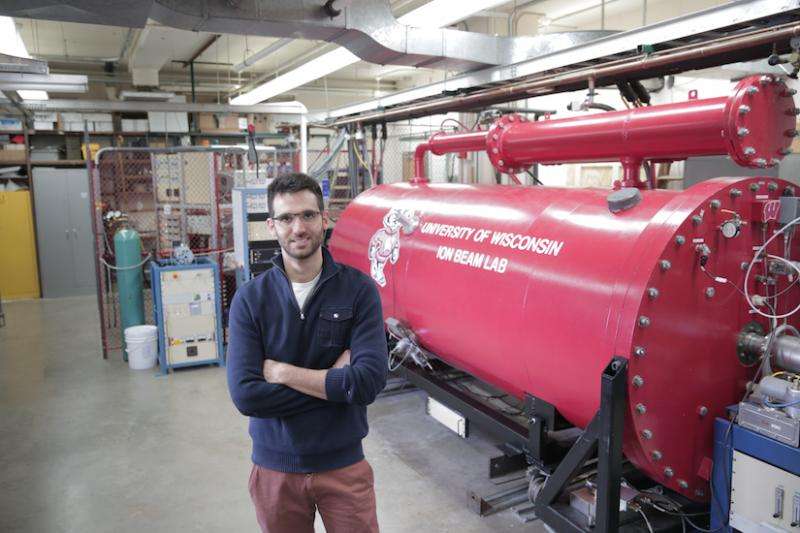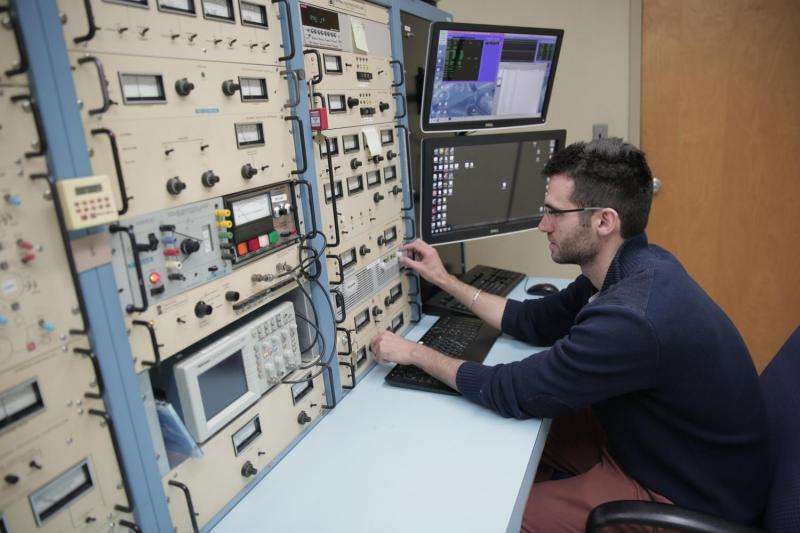Nanoceramic material for more safe and economical nuclear reactors

An international team of researchers has created a nanoceramic material that not only can withstand the harsh effects of radiation, but also becomes tougher under radiation.
Next-generation nuclear systems will operate at higher temperatures and radiation fields than ever before, producing energy more efficiently and economically.
Traditionally, water has been used as the primary coolant in reactors, absorbing the heat released from fission reactions. Though water poses fewer risks of corrosion damage to materials, there are also limits to the temperatures up to which water-cooled reactors can operate – and in advanced reactors, increasing their temperature is the best way to increase energy production.
New coolants, such as liquid metals like sodium and lead, are effective at much higher temperatures, but also are much more corrosive to the materials from which a nuclear reactor is made.
"There is a preferred use of metallic materials for structural components, but many of these materials cannot withstand high-temperature corrosion in advanced reactors," says Kumar Sridharan, a distinguished research professor in engineering physics and materials science and engineering at the University of Wisconsin-Madison. "Corrosion is a surface phenomenon, so if you put coating on the surface, you need that coating to withstand high radiation doses without becoming embrittled."
Sridharan and collaborators at the Istituto Italiano di Tecnologia (IIT) in Milan, Italy, characterized an aluminium oxide nanoceramic coating – a new material that can withstand the harmful effects of these high-temperature liquid metals in advanced reactors. This material could be a huge boon to these systems. The researchers described it in a paper, "Radiation endurance in Al2O3 nanoceramics," published Sept. 22, 2016, in the Nature journal Scientific Reports.

Many materials tend to harden and crack when exposed to radiation. However, aluminium oxide nanoceramic coatings toughen, ultimately benefitting from irradiation, says Fabio Di Fonzo, a team leader at the IIT Center for Nano Science and Technology.
"The pinpoint of our work is the demonstration that an amorphous or nanoceramic material can improve during irradiation, and this opens the path toward a different view of nuclear materials, specifically where coatings are concerned," he says.
Sridharan and Di Fonzo combined their expertise through graduate students Alexander Mairov and Francisco García Ferré, who both initially worked with Di Fonzo while pursuing their master's degrees at CNST-IIT. After Mairov moved to UW-Madison to obtain his PhD, he and García Ferré connected the two researchers through their similar interests.
Di Fonzo's lab has been producing aluminium oxide nanoceramics for a few years. Collaborating with Sridharan's group, which used transmission electron microscopes to conduct microscopy analysis of the coating, the researchers developed a more thorough understanding of its properties. "Di Fonzo's lab developed the coating and exposed it to radiation, and we conducted analysis and helped them interpret the result," says Mairov. "We correlated changes they observed in the mechanical properties with changes in the nanoscale structure."
The researchers anticipate that this unique material will be able to make next-generation reactors more safe and economical overall.
"It's a paradigm shift in the field, because so far there has not been a material that actually exploits radiation," says García Ferré. "With this new material, we benefit from a radiation environment to tailor the evolution of the mechanical properties of the material. In particular, we are able to have a material that, by the end of its lifetime, has similar mechanical properties as when it was first exposed to radiation."
More information: F. García Ferré et al. Radiation endurance in Al2O3 nanoceramics, Scientific Reports (2016). DOI: 10.1038/srep33478
Journal information: Scientific Reports
Provided by University of Wisconsin-Madison


















